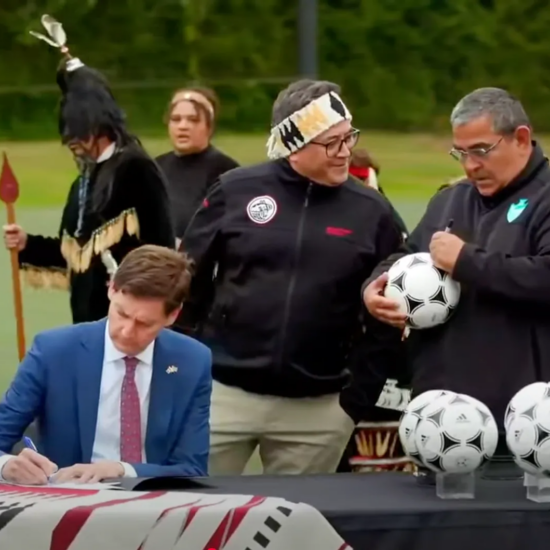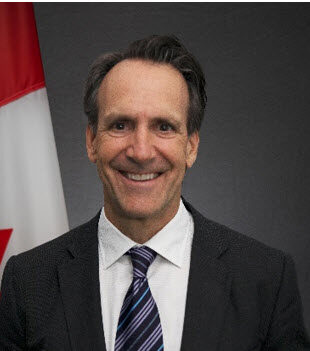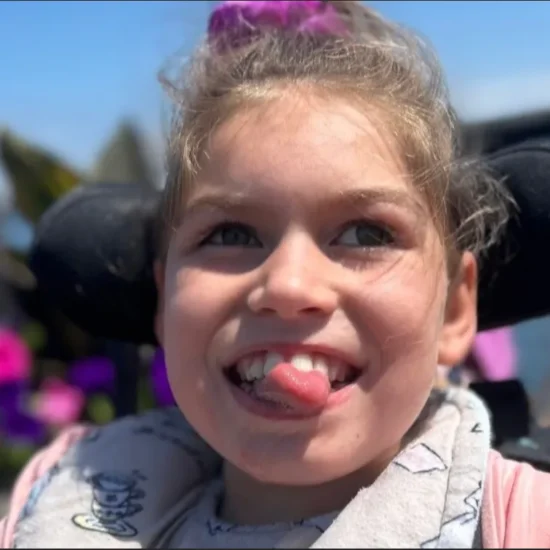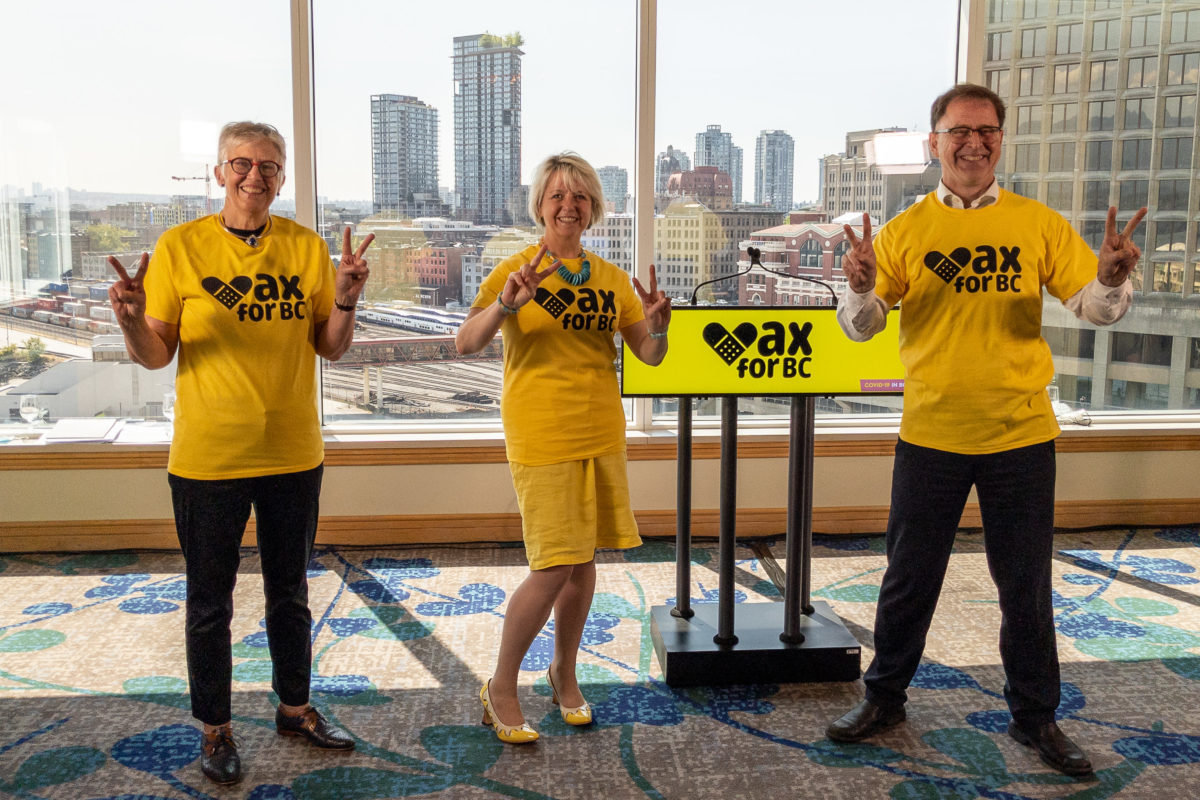
Bob Mackin
The COVID-19 pandemic is the biggest, most-disruptive global event to affect the lives of British Columbians since the Second World War.
So the provincial response to the crisis should elicit a full investigation, right?
Instead, the NDP government hired three ex-civil servants under strict parameters with a deadline of just over six months and no public hearings. After a lengthy delay, it was finally released on Dec. 2 with little fanfare. Solicitor General Mike Farnworth did not appear in front of TV cameras and the authors weren’t there.
Here’s what you need to know:
Hands tied
Terms of reference for reviewers Bob de Faye, Dan Perrin and Chris Trumpy did not allow a review of the decisions made by cabinet and the provincial health officer. They weren’t allowed to make recommendations. Instead, they gave findings.
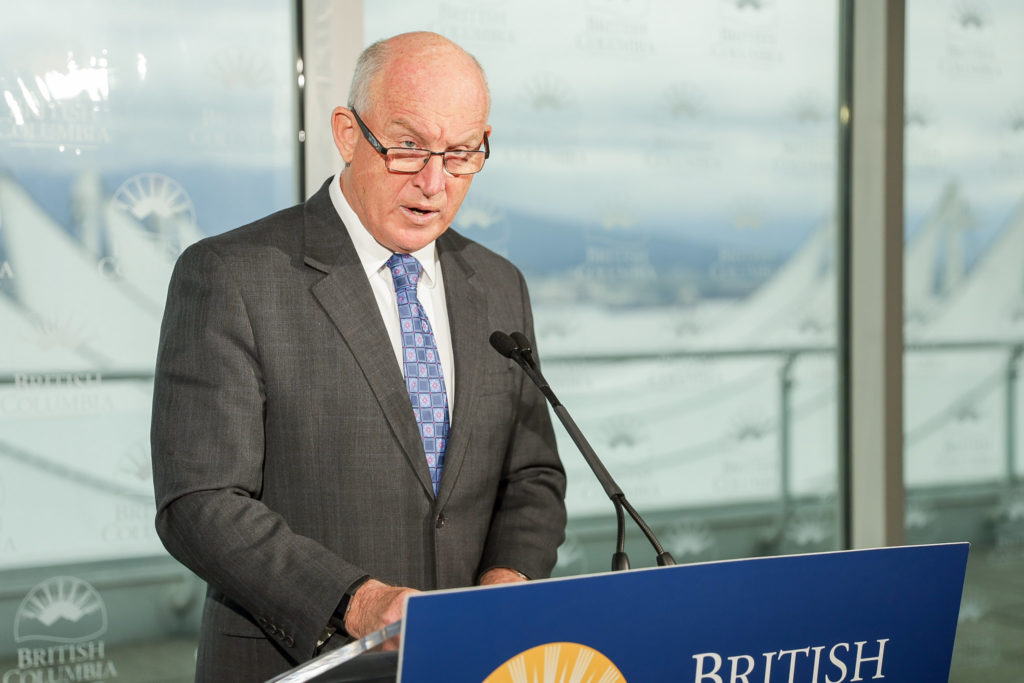
Mike Farnworth announces $2,000 fines on April 19 (BC Gov)
Ahead of time, under budget
That oft-heard government cliche “on-time, on-budget” didn’t apply here. The review’s deadline was Sept. 30, but it arrived a week early. The ministry did not originally announce a budget. When a reporter asked in September, the ministry said it was $1.715 million. The final cost was $775,000. Part of the reason was lower than expected travel costs, due to a reliance on virtual meetings.
Nine-week delay
The report arrived more than a week-and-a-half before the Oct. 3 reopening of the Legislature. It was finally published just over a week after the last Question Period of the fall session and two weeks since David Eby took over as premier from John Horgan.
Take out the trash
Reporters got a 1:05 p.m. advisory that Farnworth would be available on a teleconference at 2 p.m. on Friday. The report arrived at 1:17 p.m., meaning just 43 minutes to read 144 pages.
Asked why it was released on such short notice on a Friday afternoon, Farnworth said: “The day was booked, I think some time ago, in terms on this particular day. It was done in terms of what else was going on this afternoon, and it’s on that basis that the schedule was put together.”
Government Communications and Public Engagement did not employ its usual range of communications tools. It frequently provides media with reports and presentations an hour or two prior to a public announcement, on an embargoed basis. Sometimes with a not-for-attribution briefing by officials.
Not this time. None of the three co-authors was available.
Case in point: On Sept. 20, reporters got 22 hours notice of the release of the executive summary of a report into repeat offenders and an invitation to register to receive embargoed documents. Farnworth was one of the officials at the in-person and live-streamed announcement, along with report co-authors Doug LePard and Amanda Butler.
Survey says
The authors gave better than passing marks overall to government for the pandemic response and said there is room for improvement. The respondents to their March 16-April 20 survey through the government’s govTogetherBC platform were harshly critical.
“A vast majority of respondents want a review of the actual decisions made to respond to the pandemic, which is beyond the scope of this review,” the report said. “The extreme level of vitriol directed at decision-makers by many respondents was shocking.”
Nearly three-quarters (74%) disagreed with the statements “I trusted COVID-19 information provided by government” and “Overall the B.C. Government managed the pandemic well.”
Respondents slammed the government for its: failure to admit aerosol transmission of COVID; failure to disclose vaccine risks; inadequate testing levels and unreliable case numbers; demonization of critics and firing of unvaccinated health-care workers; inconsistencies between B.C. positions and other jurisdictions without explanation; and unwillingness to release more about local case numbers.
Farnworth dismissed the online survey results, saying “this was not a statistically relevant sample.”
Omission and commission
The report claimed that “Information on personal protective equipment inventories did not exist.”
Provincial Health Services Authority memos and briefing notes released under freedom of information in mid-2020 showed that someone was at least counting the emergency stockpiles. They said that the value of medical equipment, including masks, gloves, eye goggles and hand sanitizer, had dwindled from $5.7 million in July 2013 to just $2.07 million by January 2020.
“Health authorities’ pandemic supply levels have dwindled or been eliminated on many items across the province. Should a widespread pandemic occur in B.C., the current level of pandemic supplies will likely not meet B.C.’s requirements which may lead to public safety risk,” said one of the February 2020 memos.
The report sugar-coated the relationship between the Ministry of Health and three First Nations: “In early 2021, the PHO and senior government officials sat down with leaders from the Heiltsuk Nation, Tsilquot’in National Government, and member nations of the Nuu-chah-nulth Tribal Council to develop an information-sharing agreement, which was signed in early February of that year.”
In 2020, the three First Nations unsuccessfully appealed directly to Minister Adrian Dix and Dr. Bonnie Henry for details of the spread of the virus in their communities. They said the public interest override in the Freedom of Information and Protection of Privacy Act required transparency in a crisis. They went public and ultimately, in December 2020, Information and Privacy Commissioner Michael McEvoy released his ruling.
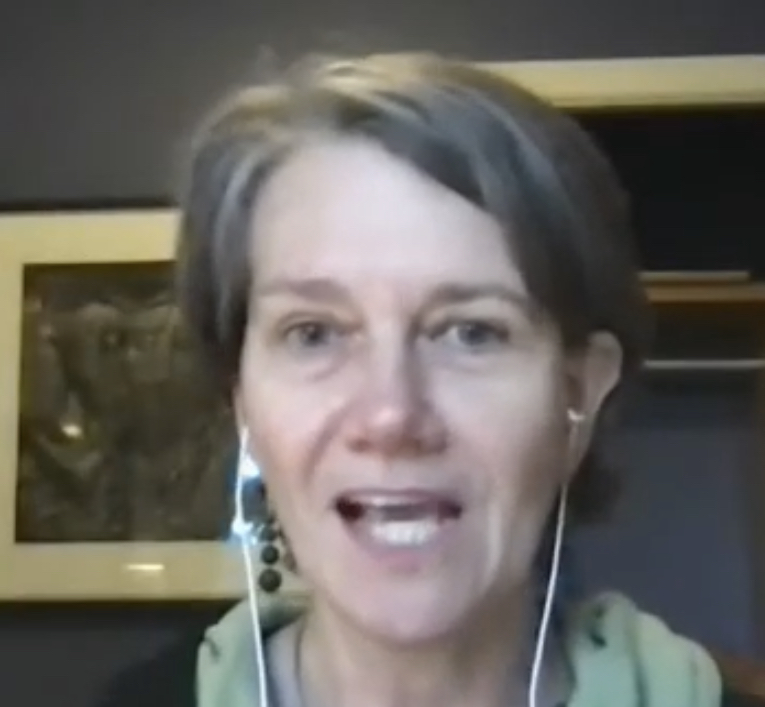
Dr. Lyne Filiatrault (PoP BC/YouTube)
While McEvoy agreed with them that the FOI law trumps the Public Health Act, he was satisfied the government had released enough information under the law.
Missing from the timeline
The report included a detailed appendix of select pandemic timeline events from January 2020 to May 2022. There was no mention of the B.C.’s first superspreader, the Pacific Dental Conference from March 5-7, 2020 at the public-owned Vancouver Convention Centre.
The Oct. 24, 2020 provincial election day is mentioned, but not the campaign that preceded election day. The Sept. 20, 2021 federal election isn’t mentioned.
Thumbs down
Retired emergency room physician Dr. Lyne Filiatrault of Protect Our Province B.C. said the report lacked true independence and was rife with scope creep.
“They went outside of assessing the government response, they assessed the pandemic response, based on indicators that in my mind are not the correct indicators and with useless data, which is the data that B.C. has based on under-testing, under-reporting,” Filiatrault said in an interview.
“If we’re going to spend the time, the energy and the money on doing an independent review, there has to be concrete, binding actionable goals. As opposed to this 150 pages, which to me, doesn’t leave me with a lot of clarity as to what is the government going to do with this.”
Support theBreaker.news for as low as $2 a month on Patreon. Find out how. Click here.









